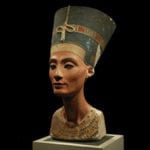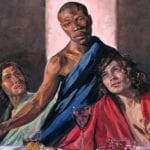 Weird Stuff
Weird Stuff  Weird Stuff
Weird Stuff  Mysteries
Mysteries 10 Tragic Disappearances and Deaths in Joshua Tree National Park
 History
History 10 Ways Childhood Really Sucked in the Old West
 Music
Music 10 Name Origins of Famous Bands from the 1990s
 Religion
Religion 10 Biggest Turnarounds by the Catholic Church
 Weird Stuff
Weird Stuff 10 Unbelievable Times Laws Had Unintended Consequences
 Humans
Humans Ten Historic Women Who Deserve Way More Credit Than They Got
 Movies and TV
Movies and TV 10 Films That Spawned Major Lawsuits
 History
History Ten Times Towns Were Wiped Off the Face of the Earth
 Creepy
Creepy 10 of the Most Disturbingly Haunted Public Houses in the UK
 Weird Stuff
Weird Stuff 10 Niche Subcultures That Are More Popular Than You Might Think
 Mysteries
Mysteries 10 Tragic Disappearances and Deaths in Joshua Tree National Park
 History
History 10 Ways Childhood Really Sucked in the Old West
Who's Behind Listverse?

Jamie Frater
Head Editor
Jamie founded Listverse due to an insatiable desire to share fascinating, obscure, and bizarre facts. He has been a guest speaker on numerous national radio and television stations and is a five time published author.
More About Us Music
Music 10 Name Origins of Famous Bands from the 1990s
 Religion
Religion 10 Biggest Turnarounds by the Catholic Church
 Weird Stuff
Weird Stuff 10 Unbelievable Times Laws Had Unintended Consequences
 Humans
Humans Ten Historic Women Who Deserve Way More Credit Than They Got
 Movies and TV
Movies and TV 10 Films That Spawned Major Lawsuits
 History
History Ten Times Towns Were Wiped Off the Face of the Earth
 Creepy
Creepy 10 of the Most Disturbingly Haunted Public Houses in the UK
Top 10 Cases Of Stolen Science
We learn about so many scientists in school because they provided invaluable discoveries and solutions to everything from terrible diseases to inconvenient technology. However, there is often more to the story than what you see in news articles or Nobel Prize acceptance speeches.
Science is often fueled by competition and a race to be the first or the best. It takes a team to discover big scientific advances, and everyone wants his name in the author section. There are more cases than one would probably expect where those big science names we all know were almost replaced by someone else. Here are a few that you may find interesting.
10 Double Helix
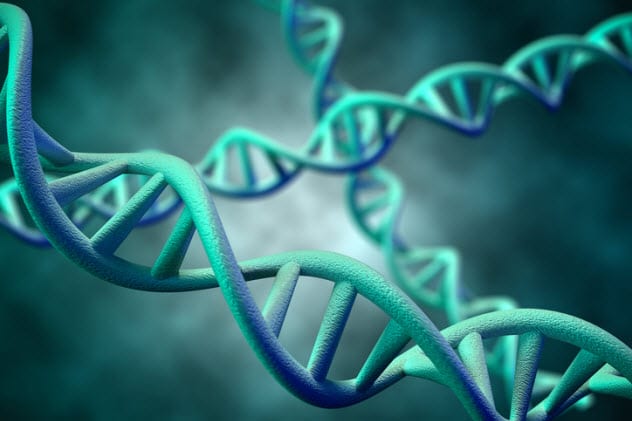
The discovery of the shape of DNA proved to be one of the most famous and important discoveries in scientific history. It allowed scientists to truly understand how DNA works and how it binds together, which has preceded countless breakthroughs in biology.
The scientists who “discovered” the double helical shape won a Nobel Prize for their priceless work. The prize went to James Watson, Francis Crick, and the lesser-known Maurice Wilkins in 1962. It was undoubtedly a collaborative effort. But the main player, Rosalind Franklin, was the only one without her name up in lights.
Just one of the many cases of women being excluded from science, the Nobel Prize was given to the trio four years after Rosalind’s premature death due to ovarian cancer.[1] Perhaps had she been alive, she could have fought for her rightful place.
Although Rosalind Franklin worked in the same lab as Maurice Wilkins, they were involved in different projects, both dealing with DNA. The lab was the first to use X-ray imaging to view DNA. In these images, the structure become clearer than it had ever been.
At that time, women did not have full access to labs. Rosalind and Maurice were said to have a feud, and although they were equals, Wilkins treated Franklin as though she were an assistant. Due to her time-consuming setbacks, the word of using X-ray crystallography had spread. So she was beaten to publication by Watson, Crick, and Wilkins, who had excluded her from the list of authors.
9 Evolution
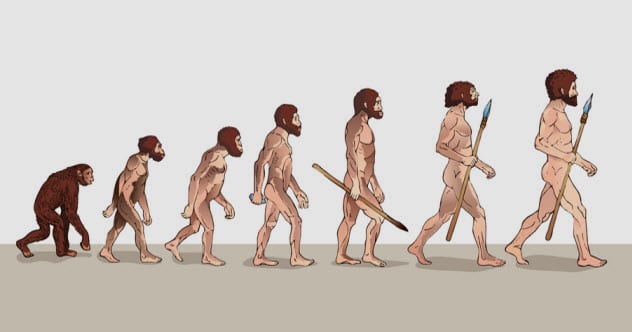 Charles Darwin is the father of evolution and was the world’s most talented naturalist. He studied biology at a time when there was no Google, no portable cameras, and not even a tiny computer you could carry around in your pocket.
Charles Darwin is the father of evolution and was the world’s most talented naturalist. He studied biology at a time when there was no Google, no portable cameras, and not even a tiny computer you could carry around in your pocket.
When Darwin set out on the HMS Beagle, the voyage that allowed him to foster the idea of evolution, he drew thousands of images of previously unknown species by hand and sent them back to Oxford to be studied further. Once he returned home to the life where he had not followed in his father’s holy footsteps and had flunked out of medical school, Darwin had a new idea. He continued to tinker with the idea of evolution for almost 10 years after he arrived home.
Darwin worked mainly with beetles and was writing On the Origin of Species. The book was published in November 1859, roughly 10 years after it had been completed.
During this time, he had shared his thoughts and drawings with a young man named Alfred Russel Wallace.[2] Wallace was young enough to be Darwin’s son and was fascinated with naturalism. After hearing about Darwin’s theories, he came to the same conclusion as Darwin—that of evolution. Wallace began to write about it himself with the intent to publish.
Meanwhile, Darwin had held back publication for two overlapping reasons. The first was to protect his wife and daughter, and the second was due to the religious community surrounding him. He feared that an atheistic view of how man came to be would be met with anger and violence. While he was not totally wrong, the threat of his friend and confidant publishing the idea of evolution forced Darwin to finally publish the now-famous book.
8 The Telescope
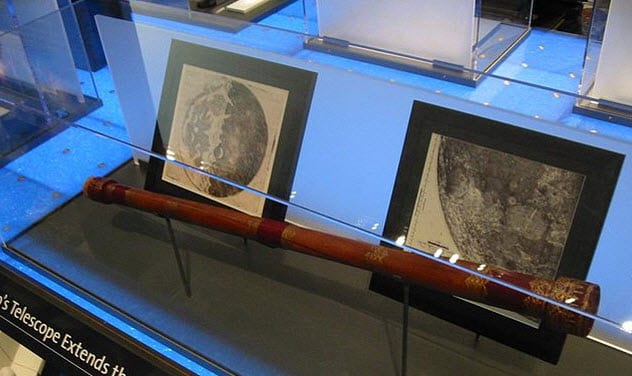
Most of us link the first studies of stars and astronomy to Galileo Galilei even though he was not the inventor of the telescope. The first telescope was created by a man named Hans Lippershey in 1608.
Lenses and spyglasses had been invented many years earlier, but Lippershey was the first to try to patent the creation.[3] Although many people credit him solely with the invention, he was ultimately denied the patent and official credit was given to three men: Lippershey, Zacharias Jansen, and Jacob Metius. The telescope they made could only magnify by a factor of three, an utter failure in light of today’s technology.
Galileo learned about the simple telescope, which used one concave and one convex lens to make objects appear larger and closer, about one year after its invention. He improved upon it in one night. After he had perfected his new telescope over the following days, he presented the idea to the Senate, leading many to believe that Galileo had invented the telescope himself.
7 Television
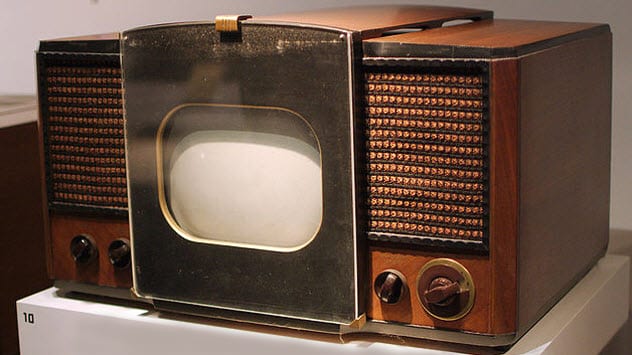
Television may not seem like a “scientific” discovery, but every invention uses science in some way. The technical aspects of TV are highly scientific even though television is not a tool used to advance science in general.
Credit for the invention of a picture television has been debated for a long time. It is difficult to settle because there were many contributors. Although there were a few precursors and preliminary inventions pertaining to sending an image and sound wirelessly, the modern TV boils down to two people, both working to create it at the same time: US-born Philo Taylor Farnsworth and Russian-born Vladimir Kosma Zworykin. Ultimately, Farnsworth received royalties on TV sales even though Zworykin was the first to obtain a patent for the invention.
Zworykin earned a patent for the iconoscope, an electron scanning tube that was used to project an image.[4] A short time later, Farnsworth was able to display transmitted television signals using a slightly altered design of the original electron scanning tube.
These differences were debated for years and ultimately ended up in court. Although Zworykin invented the original idea, it was not fully functional until it was fine-tuned by Farnsworth. The case was settled when Farnsworth’s science teacher was subpoenaed to appear in court and testified that Farnsworth had told the teacher of his ideas for the electron scanning tube at the young age of 14.
6 AIDS
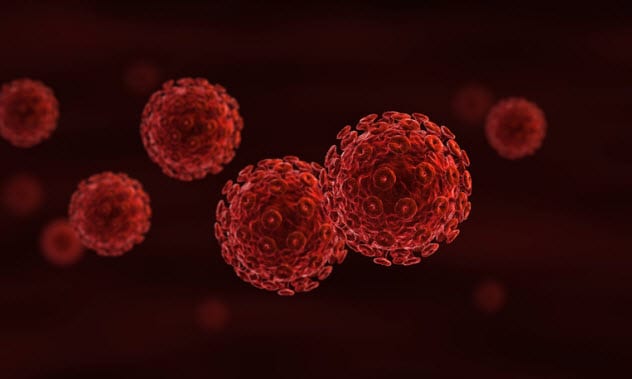
When acquired immune deficiency syndrome (AIDS) had its first major outbreak, there was widespread panic as nobody knew what caused the horrible illness. For all people knew, it could be airborne.
Scientists started to carefully study the virus, which was increasingly difficult as different strains became prevalent. The finish line moved every time there was the slightest breakthrough. This caused tremendous controversy in the science world over who was responsible for which discovery and just how big of a difference that discovery would make in the face of an ever-changing disease.
In 1983, Paris-based Luc Montagnier found a virus believed to be responsible for AIDS called lymphadenopathy retrovirus (LAV). However, when Montagnier sent his virus to be studied further, he accidentally sent a different, more powerful strain called LAI.
Around this time, a man named Robert Gallo discovered a virus that he believed to be responsible: IIIB. Montagnier and his partner, Francoise Barre-Sinoussi, eventually won a Nobel Prize for their findings even though Gallo’s virus had been virtually identical to LAI. This soured the former collaboration as Gallo felt he deserved recognition for his work all the same.[5]
5 Atom Bomb

As we know, there is always plenty of controversy when it comes to races between countries for any type of “first.” During times of war, the competition can get particularly nasty, as was the case with the initial invention of the atom bomb.
During World War II, the Soviet Union put massive efforts into getting their spies to uncover the secrets of the developing atom bomb in the US and Britain. The research began in Britain in 1941, and the Soviets got away with espionage for years without being detected. As they made their own A-bomb just four years later in record time, it was clear that they had some “borrowed” information.
The Soviets were able to buy top secret information from British and US spies. There are a few theories as to why this could have happened, ranging from secret hopes of communism to thoughts of peace.
It is thought that some spies were trying to stop the use of atom bombs because they believed there would be less destruction if both countries had equal power and technology. Knowing that their opponents had the power to bomb them back gave pause to some leaders.
The codes sent back and forth often became compromised due to the Venona project, a US program to decode messages that ultimately led to the arrest and death of several spies.[6]
4 Light Bulb
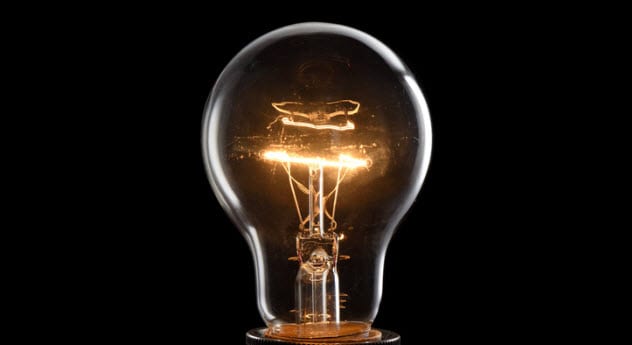 Thomas Edison had a few competitors in his effort to invent the light bulb. The most notable was Joseph Swan. The pair kept up with each other’s accomplishments in a conscious race for victory.
Thomas Edison had a few competitors in his effort to invent the light bulb. The most notable was Joseph Swan. The pair kept up with each other’s accomplishments in a conscious race for victory.
Swan began experimenting with bulbs before Edison, but the technology was not yet up to par. Vacuum pumps were needed to suck air out of the bulbs. It was not until 10 years after Swan started experimenting that the pumps became strong enough. Swan debuted his preliminary light bulb in February 1879, eight months before Edison introduced his own.[7]
Although Swan did invent a working bulb first, Edison improved upon the idea and made the item usable in everyday life. The two bulbs were similar in that they both looked somewhat like a present-day bulb and used platinum wires and carbon to create light.
However, Swan’s light bulb needed a very strong electrical current that caused the bulb to become hot and glow, which was not sustainable. The bulbs had a ridiculously short life span, which was not practical for daily use. They also emitted heavy soot that would quickly coat the inside of the bulbs and render them useless.
Edison used a thinner filament with a very high electrical resistance. This fixed the problem and earned him credit for the invention.
3 Telephone
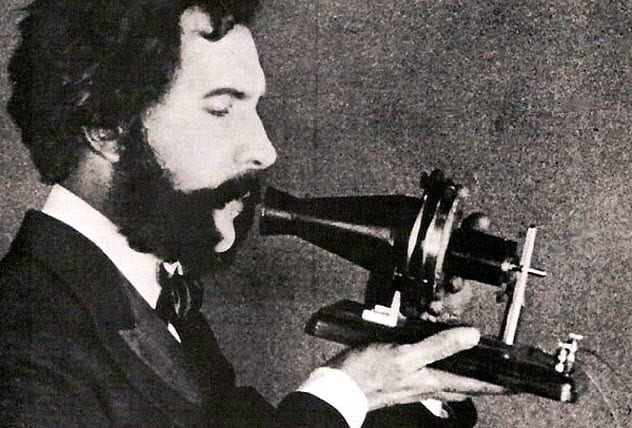
Although Alexander Graham Bell is credited with creating the telephone, that just means that his name is on the patent. He was preceded by Elisha Gray and Antonio Meucci, who created the talking telegraph.
Meucci was an Italian immigrant who was credited with the invention of the telegraph several years prior to Bell’s invention. The telegraph was recognized by the US House of Representatives in 2002 to pay tribute to Meucci’s creations. He was not as lucky to be recognized during his lifetime.
More interesting is the case of Elisha Gray. He and Bell sent lawyers to the patent office to earn the title of inventor of the telephone on the same day—February 14, 1876. Gray, a college professor, did not get the patent simply because Bell’s lawyer got there first. The story goes that Bell’s lawyer was fifth in line at the patent office while Elisha Gray’s was 39th.
However, some say that this was an oversight and incorrectly handled by public officials. Prior to this date, Gray had announced an official declaration of an invention, a caveat which should have been honored at the patent office and granted him first rights.[8]
2 Sex-Determining Chromosomes
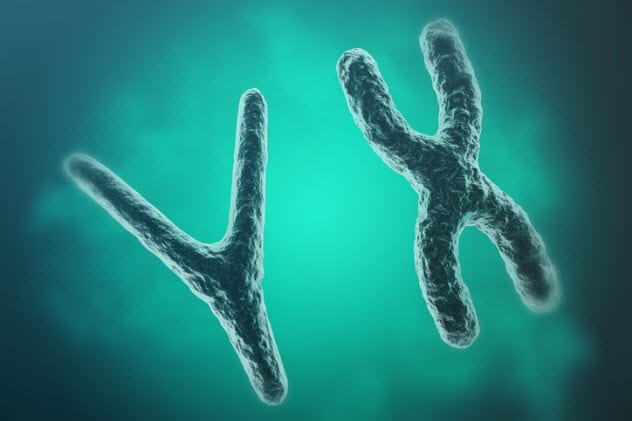 Nettie Stevens made a huge leap in science when she proved that sex is not determined by environmental factors. Through her work on mealworms and small marine bacteria, she discovered specialized sex chromosomes that trigger the hormonal growth that determines gender, which is common among many species.
Nettie Stevens made a huge leap in science when she proved that sex is not determined by environmental factors. Through her work on mealworms and small marine bacteria, she discovered specialized sex chromosomes that trigger the hormonal growth that determines gender, which is common among many species.
Stevens was an extremely accomplished scholar, having graduated from college at a time when women in science were extremely rare. She also earned a master’s degree in biology. Then she went on to study abroad in Germany and earn her PhD in 1903.
The main problem with her loss of credit was her supervisors. Many people did not take her seriously simply because she was a woman. They ignored her findings and her ideas.
While she was earning her doctorate, she had three male supervisors overseeing her work: Thomas Hunt Morgan, Edmund Wilson, and M. Carey Thomas.[9] She published her work as a grad student and died a premature death from breast cancer in 1912. Due to her early death, she never earned the title of professor, meaning that her male supervisors got most of the credit for her research.
1 Stardust
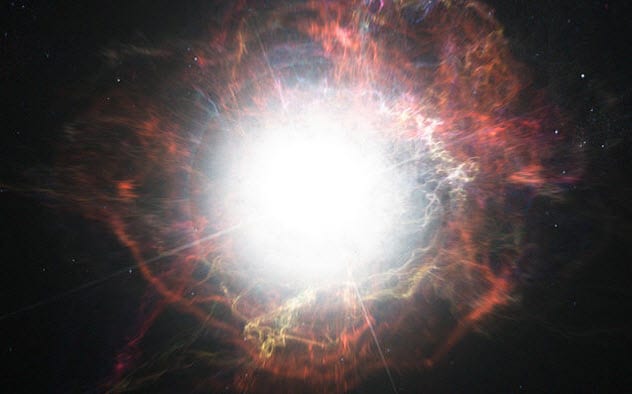
Cecilia Payne-Gaposchkin is one of the most famous astronomers in history. She successfully determined the composition of actual stardust in her 1925 PhD thesis. This story is another sad story of a woman being denied credit for no proper reason.
As part of her thesis, Payne-Gaposchkin concluded that stars are composed mainly of hydrogen and helium. But this idea was opposed by a scientist named Henry Norris Russell, who believed that stars were made from the same materials as Earth. Payne-Gaposchkin was, of course, eventually proved correct.
As Harvard did not grant doctoral degrees to women at that time, she was given the first PhD in astronomy from Radcliffe College. Her colleagues described her work as “the most brilliant PhD thesis ever written in astronomy.”[10]
Payne-Gaposchkin was not awarded the title of professor until 1956 when Harvard became more welcoming to women. Her credited works were published posthumously, while the ones released during her lifetime appeared with the main author under a man’s name. Even as a full-fledged professor who taught regular classes, Harvard did not publish her work in their catalogs. Payne-Gaposchkin now has the rightful credit for her discoveries.
Abigail loves all things science! Check out her other lists on Listverse for more incredible science, and keep an eye out for her upcoming blog (Abby Cruzin’)! Read on, nerds!
For more unexpected tales about science, take a look at Top 10 Wrongly Attributed Inventions and 10 Recent Inventions That Aren’t As Knew As You Think.
